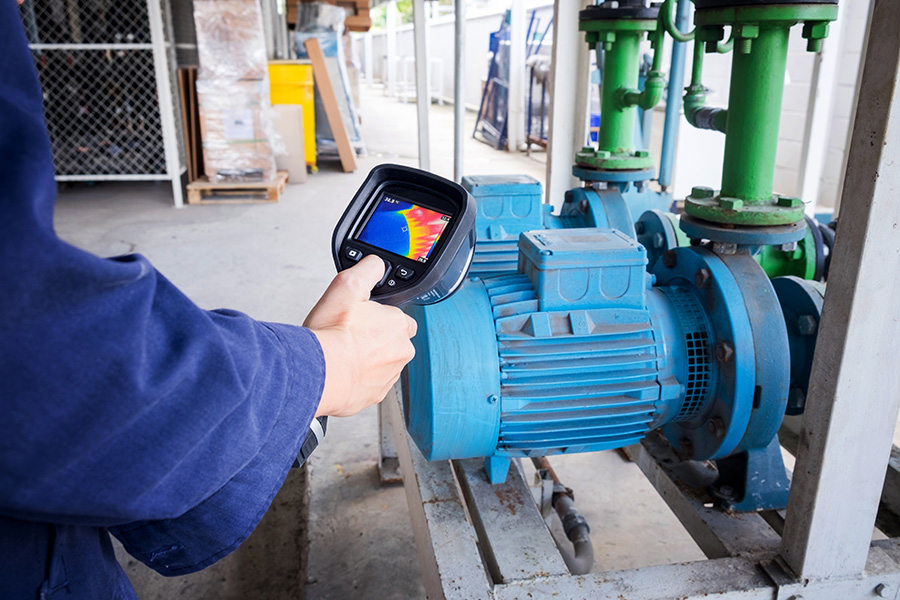3 Ways Artificial Intelligence Can Help Reduce Risk for Facility Managers
With new tools come new benefits and new efficiencies, but also new risks. Here’s what you need to know about AI and FM.
By Andrew Zarkowsky and Tracey Greene, Contributing Writers
Artificial intelligence (AI) has the potential to help facility professionals better assess and mitigate a variety of risks, including everything from selecting tenants to security to property damage. Implementing new technology strategically can also help to prevent losses, improve safety and, ultimately, save money. However, with new tools may come risks, and facility professionals should consider the pros and cons of each before adopting them.
Three key ways to use AI in the real estate industry:
1.) Early Property Damage Detection
Smart sensors, connected through the internet of things (IoT), can detect and alert facility managers to problems before they spiral into expensive claims. These sensors can be used to monitor various aspects of a property in real time, including temperature, humidity and air quality, and help property managers prioritize their maintenance efforts. Water sensors, for example, can be placed in key areas (such as near sinks, toilets, boilers and refrigerators) to detect leaks or moist conditions early. In addition, temperature sensors can identify a new hot spot and alert users to the need for immediate attention to the electrical system at that specific location, rather than relying on a generic multi-year maintenance cycle.
The power lies in having a 24/7 monitoring solution that never takes a break or misses a beat. It is not enough, however, to just install new technology. It is crucial to have a facility maintenance team that understands the technology and has the resources to react promptly, including an on-site mitigation company or cleanup contractor that can address any incidents. When all of these elements come together — knowledgeable staff, understanding of the technology and a dedicated team — that’s when the system is most effective. There are numerous examples of incidents being shut down within 10 to 20 minutes, which could have otherwise run for an entire weekend or overnight, potentially causing extensive damage throughout the building.
2.) Selecting Tenants
It is the nature of business for facility managers to gather lots of information from potential tenants before approving an application. AI tools are excellent at gathering and organizing this data quickly and can scan information for any red flags based on parameters set by the administrator. In addition, AI can automate repetitive tasks, such as data entry and analysis, freeing up time for real estate professionals to focus on higher-value activities. This increased efficiency can lead to cost savings and improved overall performance.
However, there are significant concerns to address. Handling financial or personal identifiable information (PII), privacy issues and data breaches involve major risks. Any system that collects and houses this information must have strong security measures in place, and property owners will need a detailed breach response plan in place should those defenses fail.
A more subtle and perhaps more challenging risk to manage is that of bias in the selecting process. If the system “learns” to identify red flags or is using parameters based on datasets with inherent bias, it could lead to discriminatory decision-making. If this unintended bias is built into the system, it may lead the system to exclude certain individuals or groups that should have been included. While the bias may be unintentional, it may result in a potential discriminatory outcome. Therefore, establishing proper governance and risk management measures is essential before implementing AI in real estate screening processes. Ultimately, AI used in this way will still require human oversight to ensure that input data is accurate and that any potential bias is caught.
3.) Enhancing On-Site Security
Smart cameras and surveillance robotics with internet-connected screening capabilities can essentially keep more eyes and ears open around a property, alerting owners and managers to intruders or acts of vandalism immediately. Autonomous security devices could also play a significant role in real estate, especially in this post-COVID era, where vacant office properties may become more common. These devices, utilizing robotics, could independently control and monitor sites, reducing risks such as trespassing, vandalism and theft.
Beyond vacant properties, robotics could also detect irregular behavior within occupied buildings during nighttime hours, performing tasks that are currently handled by human security personnel. The autonomous nature of these devices also allows them to operate independently, potentially enhancing security measures across a variety of real estate scenarios. However, like any form of technology, these tools are susceptible to malfunction and hacking. They can also create a false sense of security. Just because technology does not get tired or distracted the way a human security guard might does not mean it cannot miss things or misinterpret a scenario.
While AI has the potential to provide more consistent threat assessment, its effectiveness in real-world scenarios is still uncertain. If the AI fails to screen properly without human oversight, it might allow unauthorized individuals into the premises. This could result in theft or other undesirable occurrences. Ultimately, it is important to recognize that there are both positive and negative aspects to consider when comparing AI to traditional security measures. The situation is not one-sided, and a balanced perspective is necessary when evaluating the role of AI in security.
How to Pick the Right AI
While many facility managers recognize the potential of AI and connected technology in helping them mitigate risk, they may be unsure about where to start. Installing a new tool without a proper assessment of its return on investment (ROI) and impact on the property’s overall risk profile could end up being a waste of valuable time, effort and resources. However, experienced risk professionals can help to determine which solutions will work best for a given property.
It is important for facility professionals to take the time to thoroughly evaluate their organization’s specific needs and goals to ensure that the necessary resources and infrastructure are in place to support the technology.
Andrew Zarkowsky is Head of Artificial Intelligence (AI) Underwriting at The Hartford. His focus is on developing AI underwriting tools and accessing the insurance risk of AI, as well as underwriting execution inclusive of growth, profit and product innovation for the technology industry. He has nearly 20 years of experience in underwriting technology companies. Over the years, he has had the opportunity to see incredible advancements in innovation and the role that insurance plays in helping tech companies grow.
Tracey Greene is the Real Estate Industry Practice Lead for The Hartford’s Middle and Large Commercial segment.
Related Topics:












